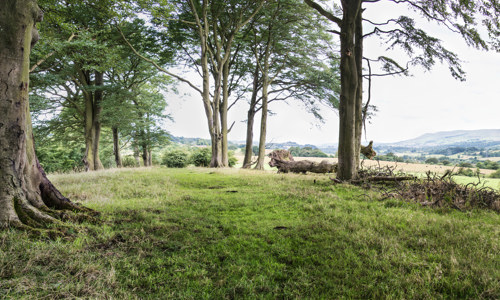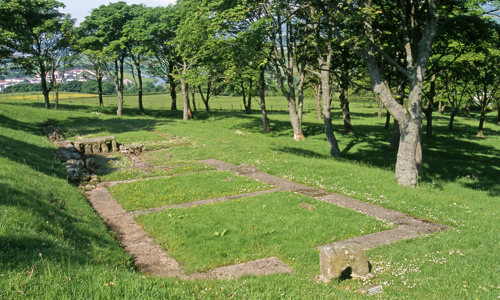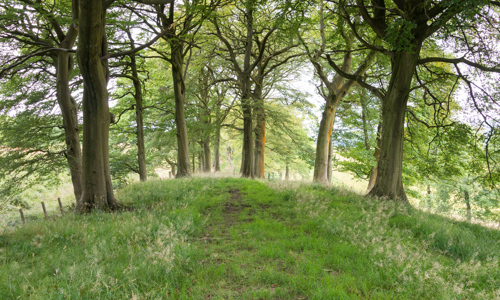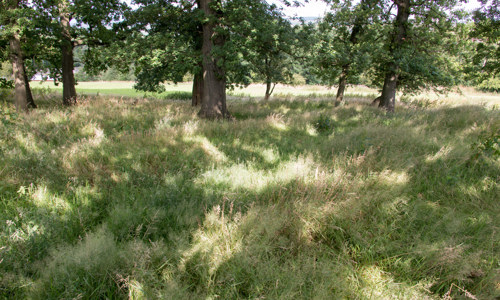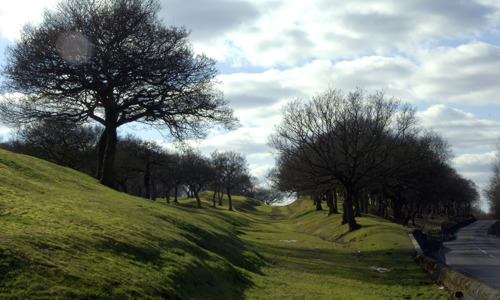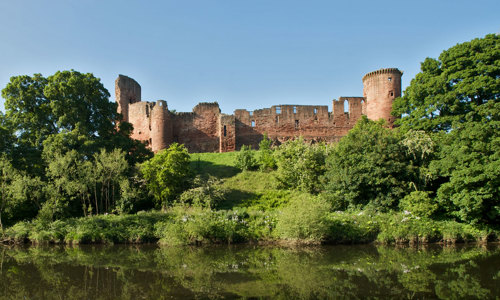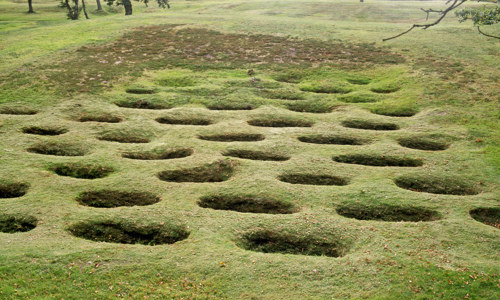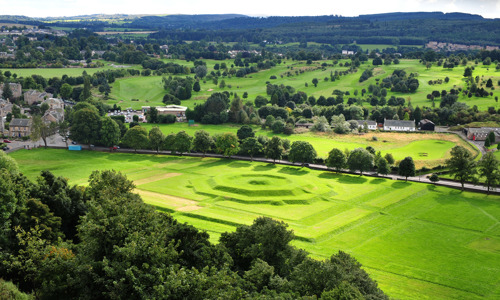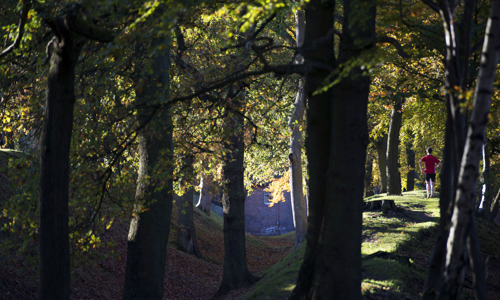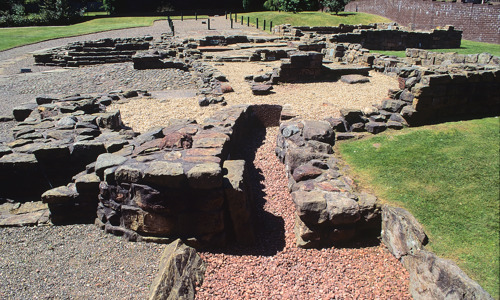History
A commanding position
Two raised expansions, which can still be seen attached to the south face of the Antonine Wall rampart, may have been used for signalling beacons.
Croy Hill is an ideal lookout spot: at about 120m above sea level, it’s one of the highest spots on the Antonine Wall, and features excellent views of the surrounding countryside.
The fort that was
Historians investigating Croy Hill in the 1700s noted that traces of the fort were either indistinct or totally levelled, and a hamlet was flourishing on the site. Excavations in the 1920s and 1930s uncovered much of the plan of the fort, revealing it enclosed an area of an acre and a half. The fort featured:
-
a headquarters building
-
a granary
-
a ‘remarkable’ stone-built well
-
an altar to the nymphs
Other Roman finds there included:
-
coins depicting emperors Trajan and Domitian
-
a bronze arm purse
-
fragments of a face mask
-
boot nails
Further excavations in the 1970s identified a fortlet around 80m west of the fort. Fragments of pottery and an arrowhead indicate pre-Roman occupation in the area.
Frontier of an empire
The Antonine Wall was the Roman Empire’s north-western frontier. Built on the orders of Emperor Antoninus Pius in the years following AD 140, it ran for 37 miles (60km) across Scotland’s central belt, from modern Bo’ness on the Firth of Forth to Old Kilpatrick on the River Clyde.
Rather than a stone wall, the Antonine Wall consisted of a turf rampart 3–4 metres high on a stone base, possibly topped with a timber palisade. It was fronted by a wide and deep ditch, much of which is still visible today. Forts along the wall provided accommodation for the troops and acted as secure crossing points. All forts were linked by a road called the Military Way, which ran behind the rampart.
When it was completed, the Antonine Wall was the most complex frontier ever built by the Roman Army. It was the Romans’ last linear frontier, and was only occupied for about 20 years before it was abandoned in the AD 160s.


